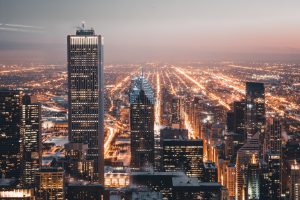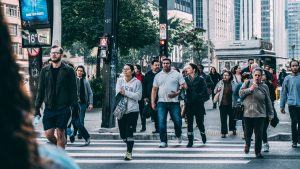
March 2, 2018, by Ross Wilson
Future Cities – a key issue for Liberal Arts
How will we live in the cities of the future? This is a question that troubles politicians, urban planners, architects, environmentalists as well as individuals and communities across the world. In the context of limited resources, increasing populations, crumbling infrastructure and environmental degradation, we need to pay serious heed to this issue. This is where an interdisciplinary perspective is needed as cities need to be designed and planned but they also need to be spaces where people work and live. Cities are experienced on the ground level rather than just designed in the boardroom.

Once this issue of future cities was the preserve of science fiction, imagining the technological advances, social alterations and political frameworks that humans would invent for themselves. This process of imagining the future has provided the famous, captivating but also terrifying visions of urban areas decades or centuries ahead that we see in Metropolis (1925), Bladerunner (1982) or The Fifth Element (1987). Whilst we may be left disappointed in some respects (but relieved in others) that the amazing future we so often see in films and literature has not been realised, this process of imagining the future is vital.
We have to imagine, take different outlooks, consider alternative positions and think through issues if we are to construct sustainable cities. We must draw upon artists and authors alongside designers and politicians to assess how cities may look but also how they might be experienced. This is the key part of a Liberal Arts degree, to imagine the world from a range of perspectives and to draw conclusions from this assessment.
The problem that we have often faced in conceptualising and building cities for the future is that too often we forget that urban areas must function for people. During the twentieth century we have seen grand city plans that have not always worked for society. From the implementation of Ebenezer Howard’s plans for ‘Garden Cities’, the ‘City Beautiful’ movement in the United States to the modern cities like Brasilia (Brazil) or Chandigarh (India), how people move around urban areas, engage with one another and build communities can be overlooked.

Interdisciplinary thinking enables us to view cities in their complexity, from the needs of housing and transportation, to issues of schools and safety and the sense of place, belonging and engagement that is so important in creating sustainable and vibrant cities. As our cities are being developed, we need to incorporate all these perspectives to ensure we do not see the dystopian visions of the metropolis that are evoked in some films and novels!
It is that ability of the Liberal Arts scholar, to draw elements together from different subject areas, that is required to solve the question: how will we live in the cities of the future? Such a process is complex but it ensures that we will build cities that work for the people who live within them. The great urban reformer, Jane Jacobs (1916-2006), once declared this the fundamental principle to observe as we imagine what our future city would look like:
“There is no logic that can be superimposed on the city; people make it, and it is to them, not buildings, that we must fit our plan

No comments yet, fill out a comment to be the first

Leave a Reply